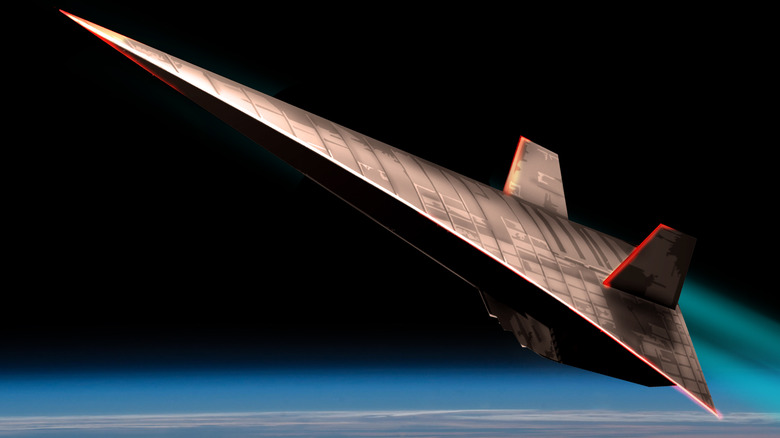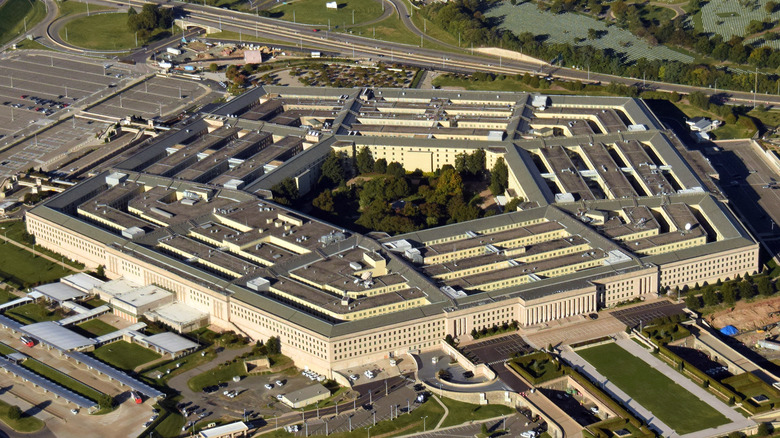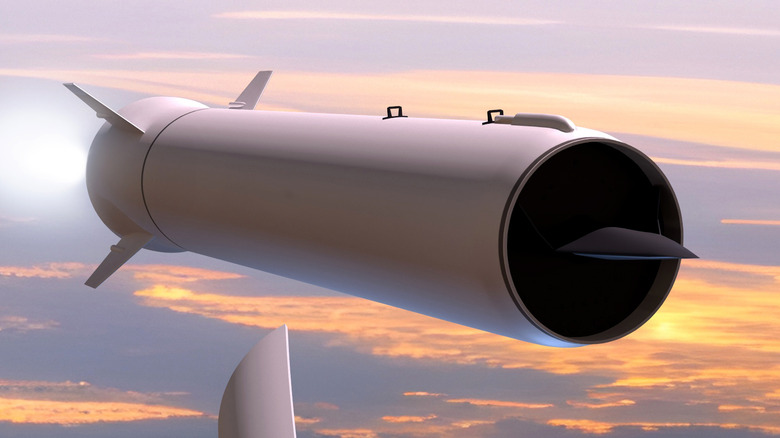The Fascinating Science Behind How Hypersonic Weapons Work
Subsonic. Transonic. Supersonic. Hypersonic. Are all of these terms really necessary, or are they just arbitrary divisions used for posturing and bravado? As it turns out, they do matter, and understanding what they mean helps to provide a better appreciation for hypersonic weapons and how they work. So let's take it from the top.
Subsonic vehicles travel at speeds that most people experience in daily life, encompassing everything from walking speed to even the most aggressive highway driving. At these speeds, air acts intuitively. Transonic speeds approach the speed of sound (Mach 1, or 761 mph at sea level) without crossing it. This is the realm of passenger aircraft, which travel fast enough that the air around them can potentially break the sound barrier, even if the planes themselves don't. Supersonic aircraft fly faster than Mach 1, which creates the characteristic sonic boom shockwave associated with military jets, the Concorde, and current commercial airliner research. Hypersonic flight, then, refers to objects traveling through the atmosphere at Mach 5 — that's 3,500 mph, or nearly 1 mile per second — or faster.
Mach 5 is a significant threshold, because it's at these speeds that aeronautical engineers are required to throw out their convention and start operating on a completely different set of principles governing the physics of air. At hypersonic speeds, lift, drag and temperature don't follow intuitive rules anymore, making them a tough barrier to work around — tough, but not impossible.
The need for speed
The United States has been ramping up spending on hypersonic weapon research over the last decade, with government spending in this area increasing by 740% between 2015 and 2020 (via CNBC). There's no sign of slowing down, either. The Department of Defense's (DoD) current 5-year plan includes $13.4 billion for developing hypersonic missiles, and that doesn't include the cost of actually procuring them. So why the sudden interest?
In short, the U.S. has isn't on par with competitors, including both China and Russia, where hypersonic weapons are concerned. China has featured hypersonic weapons in military parades, and Russia is believed to have used hypersonic missiles to attack Ukraine. Both North Korea and Iran have also claimed to have hypersonic weapons. Officials within the DoD are intending not only to catch up to the technological capabilities of other countries, but to surpass them in what has quickly become the new arena for an international arms race.
Faster missiles allow for shorter response times to capitalize on a brief opportunity to strike an important target or to launch a counterattack. But there's much more to the abilities of hypersonic weapons than just speed. What really makes them advantageous is the capability for atmospheric flight. Traditional ICBM's rocket above Earth's atmosphere before falling back down onto the target. This makes them predictable. But hypersonic weapons spend a lot more time within the atmosphere, which means they can maneuver on the fly to avoid defensive countermeasures. But how do they do it?
The world of hyper-engineering
When something travels at a hypersonic speed, the air around it is constantly exploding. The heat is beyond extreme, leading to myriad challenges. What materials won't melt or flake off? How can guidance systems communicate with satellites and ground stations through a supercharged plasma envelope? Is there an engine more sophisticated than a chemical rocket that can sustain these speeds?
Some of these questions are open issues. Others may be solved but classified. But there are some things we do know. For example, hypersonic weapons can make use of a "scramjet" (supersonic-combustion ramjet), a kind of engine with no moving parts that scoops up the hyper-compressed oxygen around the vehicle and ignites it for extremely efficient propulsion.
An important benefit of hypersonic weapons is maneuverability, which means they handle more like a winged aircraft than a ballistic rocket. But building an aircraft that can operate at both subsonic and hypersonic speeds is difficult because the physics of flight at these speeds is so different. To get around that, the United States Air Force's AGM-183A Air-launched Rapid Response Weapon (ARRW) can be launched from a strategic bomber.
The ARRW uses a conventional rocket to gain speed and altitude, and then releases a payload of hypersonic weapons that independently glide down to lower altitudes while attaining speeds rumored as high as Mach 20. While hypersonic weapons still have some technical challenges to overcome, they're becoming increasingly sophisticated. Fingers-crossed that the they won't be used in anything but a cold war.


